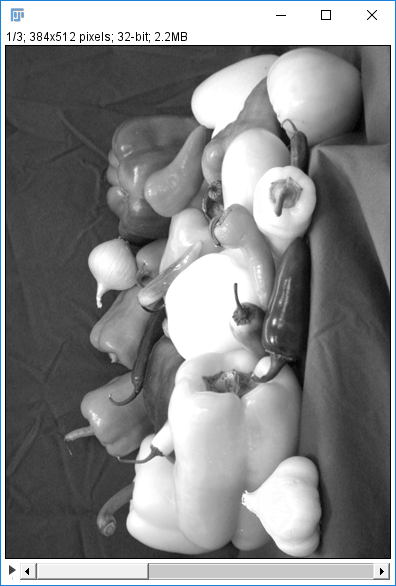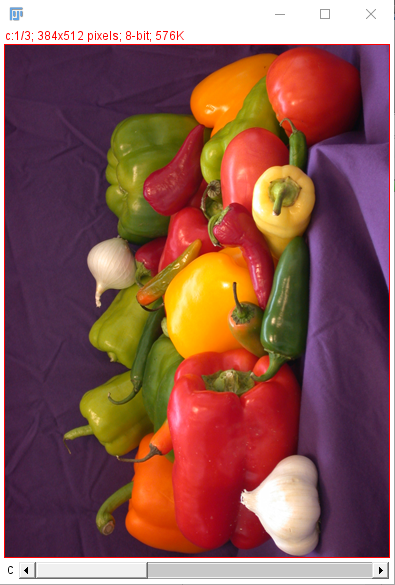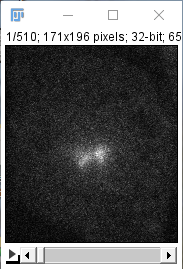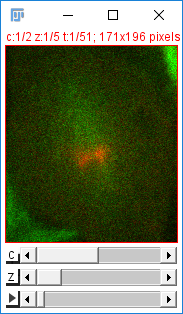NOTE: ijmshow is not recommended any more because of its dependency on IJM. Consider using copytoImagePlus instead.
A MATLAB function. A wrapper of net.imagej.matlab.ImageJMATLABCommands.show() (or IJM.show()) to support opening a MATLAB array as 5D hyperstack in ImageJ
copytoImagePlusdoes the same job without requiring the Java objectIJMcopytoImgandcopytoImgPlusare bundled with Fiji and work in a similar way but using ImageJ2 API and objects.
https://imagej.net/MATLAB_Scripting#Running_ImageJ_within_MATLAB
ImageJ-MATLAB as part of Fiji installation allows us to open an ImageJ instance from within MATLAB and we can transfer an array of data using IJM.show('name') (from MATLAB to ImageJ) and IJM.getDataset() and IJM.getDatasetAs('name')(from ImageJ to MATLAB).
Although these are useful, the current version of ImageJ-MATLAB's IJM.show('name') has the following limitations:
IJM.show('name')will flip over the X and Y axes of array between MATLAB and ImageJIJM.show('name')cannot handle multidimensional (>2D) images properly; All the third and higher dimensions are piled as the fifth dimension of a 5D hyperstack. This is a real pain if you are handling more than one channel, one slice, or one frame of images, as is often the case.- No matter what data type the original MATLAB array is, it is shown in ImageJ as
int32data type. Conversion of the datatype to bytes (uint8) or short (uint16) in ImageJ can involve scaling of numeric values, resulting in unexpected changes of pixel values, unless carefully avoided.
ijmshow is a wrapper of net.imagej.matlab.ImageJMATLABCommands.show() (or IJM.show()) and offers solutions to the above issues. Until someone can fix the IJM.show() properly some day, ijmshow will be useful for interaction between MATLAB and ImageJ.
- X and Y axes can be corrected (eg, using
YXCZTby default) or left as default behaviour (eg.XYCZT) - The
dimorderinput argument can specify the dimensions for channels (C), slices (Z), and frames (T) (by defaultYXCZT) - Numeric values of pixel data are maintained while the image type is converted to 16 bit or 8 bit depending on the data type of the original MATLAB array.
- You can access
IJMin the base Workspace from within a MATLAN function. You can open a MATLAB array in a function with ImageJ.
imp = ijmshow(I)
imp = ijmshow(I,dimorder)
imp = ijmshow(____,'Param',value)
% Param can be 'NewName' or 'FrameInterval'>> addpath '/Applications/Fiji.app/scripts'
>> ImageJ
>> I = imread('peppers.png') % the size of I is 384 x 512 x 3 in MATLAB
>> IJM.show('I')This will end up X and Y flipped over, and channels are not recognized as channels (instead, it is interpreted as time frames).
>> imp = ijmshow(I)
>> imp = ijmshow(I,'YXC') % equivalent as above
>> imp = ijmshow(I,'YXCZT') % equivalent as above>> imp = ijmshow(I,'XYC') % X an Y flipped over>> imp = IJ.openImage("http://imagej.nih.gov/ij/images/Spindly-GFP.zip");
>> imp.show();
>> impimp =
img["mitosis.tif" (-1132), 16-bit, 171x196x2x5x51]
The image has 171 X, 196 Y, 2 channels (C), 5 slices (Z), and 51 frames (T).
>> IJM.getDatasetAs('I');
>> size(I) ans =
171 196 2 5 51
Note that X and Y have already been flipped over by IJM.getDatasetAs('I')
>> class(I)ans =
'double'
Note that the data type is double rather than uint16.
>> I16 = uint16(I); % convert to uint16
>> IJM.show('I16')
>> imp2 = ij.IJ.getImage()imp2 =
img["" (-1136), 32-bit, 171x196x1x1x510]
IJM.show() will flip X and Y again, so back to normal X and Y. However, the third to fifth dimensions of the image are all piled in the fifth dimension as 510 time frames (T). The image is in 32 bit type.
>> imp3 = ijmshow(I,'XYCZT')imp3 =
img["" (-1180), 16-bit, 171x196x2x5x51]
'XYCZT' will accept the flipped over X and Y as input. Now it is shown as 2 channels (C), 5 slices (Z) and 51 frames (T) as expected. Image type is 16bit. The image looks brighter because of the difference in DisplayRange setting, but the numeric values were identical to the original.
This is a matlab.unittest.TestCase subclass and verify the numeric values and dimensions of the ImagePlus objects in ImageJ opened by ijmshow.
- 12bit data is not well supported or tested
FrameIntervalmay not be properly set, because File Info... does not show the Frame Interval.Display Rangesneeds to be set separately. It's possible to implement an option to automatically set Display Ranges from the min to the max of each channel. It's not clear whatCompositeImage.resetDisplayRanges()does.IJM.show(name)appear to have a problem with handling large image data.copytoImagePlusdoes the same job without requiring the Java objectIJMcopytoImgandcopytoImgPlusare bundled with Fiji and work in a similar way but using ImageJ2 API and objects.
Kouichi C. Nakamura, Ph.D.
MRC Brain Network Dynamics Unit, Department of Pharmacology, University of Oxford





